Structural paints and varnishes - capable of giving the treated surface a special structure and texture, due to the presence of a special structuring filler in the composition. Also, such paints can be called structural.
This type of paintwork material is used both for the behavior of internal painting works, and external (facade).
This type of materials differs from conventional ones not only by the presence of a structural component on the surface, but also by the method of application to the surface.
Structural paints can treat both new and previously painted surfaces made of mineral materials:
- concrete,
- brick,
- tree,
- plastered surfaces.
Structural paint materials are made from water-based acrylic dispersions, without the use of solvents, which is one of their positive characteristics, since they do not harm the health of the person working with them.
The appearance of the treated surface with structural paint is determined by the composition of the paints, as well as the methods of their application.
For these purposes, the following can be used:
- putty knife,
- comb,
- sponges,
- electric spray guns.
The method of applying structural paint has big influence for the consumption of structural paint. The approximate consumption is both for facade surfaces and for internal ones within 500 - 1500 g / m 2. This value is affected by the thickness of the applied layer, as well as the number of layers.
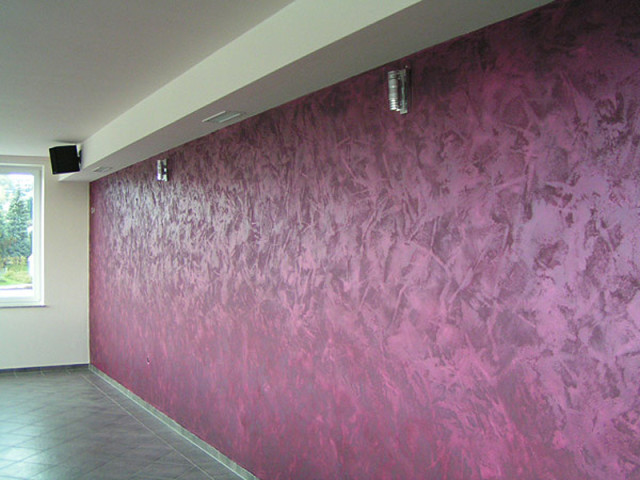
![]() Even the fact that structural coatings have increased adhesive properties, the surface to be treated must be prepared for paint application.
Even the fact that structural coatings have increased adhesive properties, the surface to be treated must be prepared for paint application.
- The main part of the preparation is the removal from the surface of old coatings of paint and plaster that have lagged behind the surface. If the plaster is applied to the surface without a reinforcing base, then it is recommended to completely remove it. This can be done with a sharp spatula and a hot trowel. Water is needed to soak the plaster.
- The next step on the surface is to apply a deep penetration primer on a well-leveled surface in advance, on which the reinforcing mesh is glued. The primer creates a layer of protection that allows the paint to be used economically, as well as adhere more firmly to the surface.
- Putty is applied to the grid. After the putty layer has dried, secondary priming is carried out. The next step is to apply structural paint.
- In cases where the old plaster holds firmly, putty can only be applied to large uneven places, and then the entire surface should be treated with a primer. The plaster needs to dry completely.
Facade structural paints have one more distinguishing feature- they fall only on certain brands of primers. Otherwise, the paint will not adhere to the surface properly.
The case is also provided if there is no suitable marking primer. In this case, the primer must be water-based.
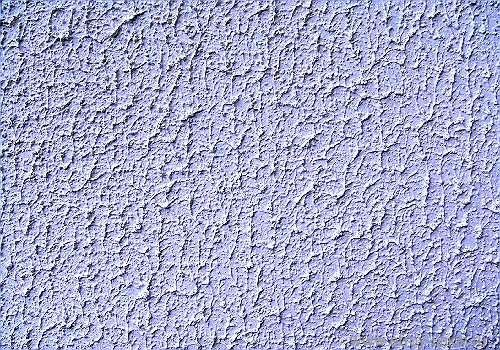 This stage is no different from working with conventional paints. Paint as a rule is sold in closed containers of a thick consistency. In order for the applied layer to be of high quality, it is recommended to dilute the paint with water, then mix thoroughly. The maximum amount of water added for thinning should not exceed 10% of the volume of the paint itself. As a rule, the required consistency is achieved with the presence of water in a volume of 2 - 3% of the paint volume.
This stage is no different from working with conventional paints. Paint as a rule is sold in closed containers of a thick consistency. In order for the applied layer to be of high quality, it is recommended to dilute the paint with water, then mix thoroughly. The maximum amount of water added for thinning should not exceed 10% of the volume of the paint itself. As a rule, the required consistency is achieved with the presence of water in a volume of 2 - 3% of the paint volume.
The difficulty is bringing the paint to the desired color with the appropriate color. In order not to spoil the paint, it is recommended to add color in small portions. After adding a certain portion of the color and thoroughly mixing, the compliance of the color with the specified requirements can be checked by applying it to a small area of the surface. Do not forget that when drying, the color of the paint becomes dull. In this connection, for a qualitative establishment of color matching, it is necessary to wait for the paint to dry completely, which can be accelerated with a hair dryer.
Structural paint application method
The application of structural paint to the surface is not difficult if the surface is properly prepared as described above.
Can be carried out:
- roller,
- sprayer.
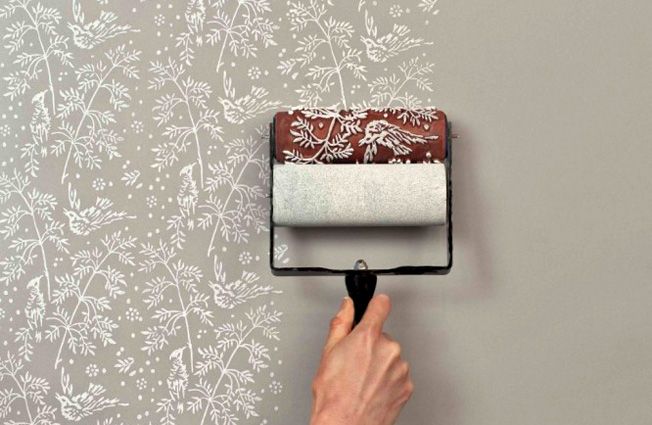 Facade structural paint is applied to the surface using a special roller, which is rolled out on a ditch designed for this purpose. The paint is applied in a large layer, the thickness of which is about 2 - 3 millimeters. The peculiarity of the application lies in the uniformity of the application of the material, which is created due to the frequent impregnation of the roller.
Facade structural paint is applied to the surface using a special roller, which is rolled out on a ditch designed for this purpose. The paint is applied in a large layer, the thickness of which is about 2 - 3 millimeters. The peculiarity of the application lies in the uniformity of the application of the material, which is created due to the frequent impregnation of the roller.
One of the features of the application is - application to the surface in one go. Otherwise, the surface will have a different color tone.
For the decorative component, the applied paint, after a short drying, is coated with a plastic or metal trowel. At right choice color shade, it is possible to obtain a processed object with a "historical" shade. This method application is used not only for facade parts, but also for interior spaces.
To obtain a delicate pattern, it is necessary to take the paint on the application device in small portions. After that, it must be moistened with a small amount of water, and applied to the surface, followed by leveling.
Structural paint sprayer
It is also possible to apply structural paint using spray guns. paintwork materials. The air pressure during spraying should be within 4 - 6 atmospheres, and the diameter of the nozzles should be about 3 - 6 millimeters. When using scaffolding, it is necessary to pay attention to their location - there must be a sufficient distance from the wall so that unpainted areas do not appear. But in this case, special sprayers - hoppers are used for structural paints. They allow you to apply paint with drops of various sizes.
The color of the facade determines not only its appearance, but also protects it from negative atmospheric phenomena.
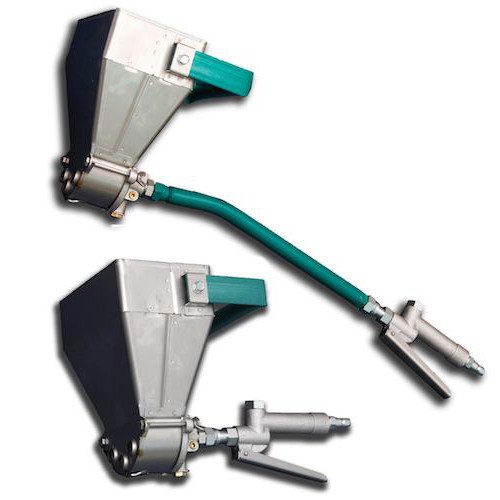 Hopper Bucket Application
Hopper Bucket Application
With the help of hoppers, structural paint is applied, as a rule, at least 3 layers.
The first layer is applied from top to bottom, and the second layer is applied with transverse movements after 2 - 3 hours after the first one has been applied. Care must be taken to ensure that there are no places where the paint does not get
The first serves to give the general basic color of the surface, and the second and third layers give different color shades. The last applied layer, as well as in cases of working with rollers, can be treated with a plastic or metal trowel to give an effective surface appearance.
related materials
The appearance of the facade of the building significantly affects its perception. The easiest way to give a new look to an old house or complete a new building is to paint the facade. High-quality paint plays not only a decorative role, it protects the wall treated with it from external influences. Facade paints are made just for exterior cladding, so you can be sure of their durability and resistance.
Structural (embossed) paint is a relatively young species decorative finishes surfaces. It is a dispersed mixture, which contains inclusions of elements of various structures. Use this way decorating has become quite recent, however, it has already gained great popularity, due to the relatively simple application technology and excellent results. Many appreciated the originality and effectiveness of the coloring composition, as well as the practicality and environmental friendliness of this material.
Among the huge number of ways to finish the facades, the method of staining with structural paint also stands out. Structural paint is some part of decorative plaster, only the method of application is very different from the usual method of applying plaster. On the one hand, this seems to be good - all the work can be done independently without additional costs in the form of payment to specialists, and on the other hand, not everything is as easy and colorful as the manufacturers of this material say. Therefore, first we will deal with all the advantages and disadvantages of this product.
Advantages and disadvantages of structural decorative paints
According to its manufacturers, their finishing material has:
- Thanks to the perfectly matched composition of the components, their material has an almost ideal viscosity when applied, which the paint stretches with a roller, while creating a deep and unique decorative structure. Actually it is not! As a rule, the decorative surface turns out to be of the same type and looks like a cement coat with a large texture so familiar to us. And diversity is achieved only through the methods of subsequent surface treatment with a spatula and diversity colors.
- The paint can be tinted in any color and shade. Of course, you can’t argue here, but again, any paint can be tinted and given any shade. Moreover, this can be done even at home in the presence of colored pigment and a construction mixer.
- Structural paint dries after being applied to the surface of the facade and forms a strong, durable, elastic film. Yes! The film is really there and in some cases it is even glossy. But still it is not durable and easily damaged. mechanically. Yes, and with this you can measure the problem in another, since this material is not antistatic, after some time dirt and dust get into the textured recesses, which is very difficult to wash out of there.
- Excellent weather resistance. Indeed, how else? Finishing material is simply obliged to withstand the effects of temperatures, rains and winds. The difference is how long it will withstand these influences? Typically, materials of this kind can last no more than 5 years, after which they must be updated.
- The material has the ability to "breathe" that is, good vapor permeability. On the one hand, it is as if the walls of the building breathe well, but on the other hand, this property contributes to the rapid contamination of the facade structure.
How to prepare structural paint for application
As for the preparation of decorative facade paints for use, it practically does not differ from other paints. As a rule, they are sold in buckets and come from factories in a thick state. Before applying to the surface, it must first be diluted with water and thoroughly mixed with a mixer. 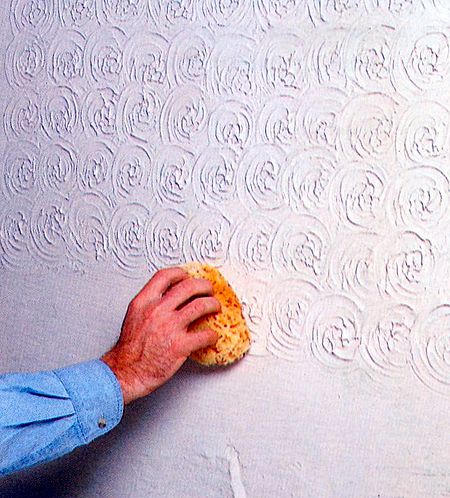 It is important to know that you do not need to dilute too much with water to save money, very much liquid paint will not lay down on the surface properly. The maximum allowable amount of water, according to manufacturers, should not exceed 11% of the paint volume. Experts with many years of experience with decorative facade paint say that 2.5% water is enough to achieve the ideal density of the material.
It is important to know that you do not need to dilute too much with water to save money, very much liquid paint will not lay down on the surface properly. The maximum allowable amount of water, according to manufacturers, should not exceed 11% of the paint volume. Experts with many years of experience with decorative facade paint say that 2.5% water is enough to achieve the ideal density of the material.
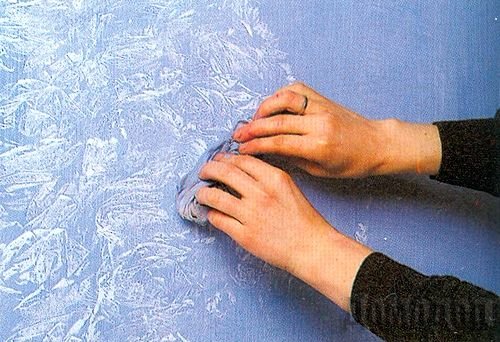 A lot of what the final result depends on is correctly tinted paint. In order not to spoil the expensive material, it is recommended to initially add the paint in small portions, while mixing the paint and applying it to the test area until you get the desired result. It is very important to know that almost all paint of this kind, after drying, changes shade and becomes dimmer. Therefore, each test area applied must be completely dried; a hair dryer will greatly help you with this, with which you can dry the area faster to see the final result.
A lot of what the final result depends on is correctly tinted paint. In order not to spoil the expensive material, it is recommended to initially add the paint in small portions, while mixing the paint and applying it to the test area until you get the desired result. It is very important to know that almost all paint of this kind, after drying, changes shade and becomes dimmer. Therefore, each test area applied must be completely dried; a hair dryer will greatly help you with this, with which you can dry the area faster to see the final result.
If you match the shade of your structural decorative paint according to the palette, then you need to know that the color that is described in the palette corresponds only if you have both paint and color pigment from the same manufacturer. Otherwise it won't match.
How to properly apply structural facade paint
The technology of applying structural facade paint is quite simple; the process of preparing the surface for its application is much more complicated. Since the durability of this coating depends to a greater extent on the quality of the base.
What needs to be done:
- The base must be perfectly level. Since the sun, as it moves, radiates light across the sky, it can show even slight curvature on the surface. Therefore, before proceeding with the application of decorative structural paint, the surface must be qualitatively plastered and puttied with a special facade composition.
- No less important role is played by a high-quality primer of the walls. The primer will relieve the freshly plastered base from separating micro grains of sand and significantly increase the adhesion of the material. Although manufacturers of structural paint write on the packaging of their products that ordinary, deep penetration is suitable for priming walls. But still, experts with many years of experience recommend additionally applying the priming mixture "Betonokontakt". The composition of this mixture includes quartz sand, it will create optimal conditions, so the paint applied on top will hold very strongly.
As we said earlier, structural paint is applied using a roller. 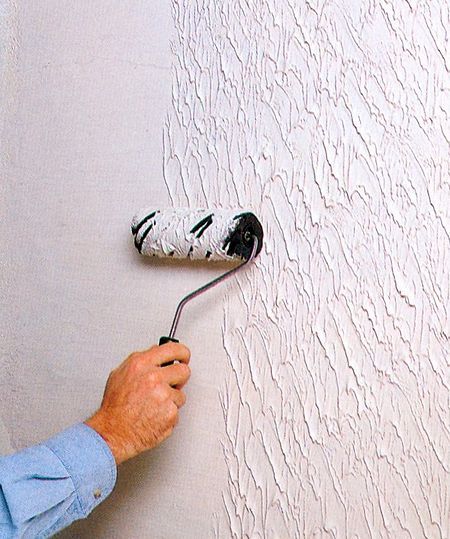 This material is applied in a rather thick layer of about 2.5-3.5 mm, only with such a thickness can the desired end result be achieved. It is important to roll out the paint evenly when applying; for this, you will often have to impregnate the roller in a cuvette.
This material is applied in a rather thick layer of about 2.5-3.5 mm, only with such a thickness can the desired end result be achieved. It is important to roll out the paint evenly when applying; for this, you will often have to impregnate the roller in a cuvette.
Probably the most important condition when working with facade structural paint is the application of planes, that is, one wall of the building must be painted in one go. Failure to comply with this condition threatens with lines of differences in color shades.
Another interesting option refinement of the resulting textured surface is the lubrication of this structure. 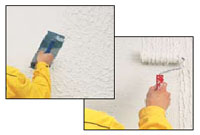 After the paint has set a little, the sharp edges formed from the application of the roller are lightly smeared with a metal or plastic spatula. Thus, the effect of aged walls can be achieved. This method can be used both on facades and for interior wall decoration.
After the paint has set a little, the sharp edges formed from the application of the roller are lightly smeared with a metal or plastic spatula. Thus, the effect of aged walls can be achieved. This method can be used both on facades and for interior wall decoration.
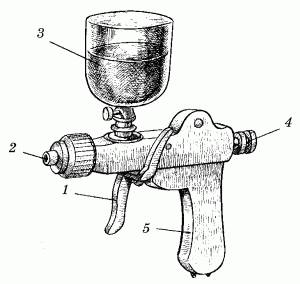
The second method of applying structural paint using a compressor and a spray gun. A sprayer called a "hopper" makes it possible to adjust the size of the paint droplets. If you apply paint in several layers in this way, you get a rather interesting drip texture. And in conjunction with the method of lubricating these drops, a rather spectacular view of the facade is obtained.
Video: How to apply decorative paint?
Exterior home renovation is considered a much more complex operation than interior decoration. Each owner is interested in the repaired facade to last as long as possible.
There are very few materials that can not fade or crack for a long time.
Among them, the most popular is structural facade paint, which, according to the owners, lasts as long as possible.
Advantages and disadvantages of structural paint
The main disadvantage of this material is the price, which is disproportionately higher than that of others. finishing materials. Of course, every master understands that quality material cannot be cheap, but there are times when the budget is limited.
Recently, when structural paint has become more common, its price has decreased somewhat, but a lot of low-quality analogues have also appeared on sale.
Therefore, it is better to choose this material only from products of proven brands.
As for the merits, the facade structural paint has more than enough of them. If the emulsion is of high quality, it will easily hide wall defects, such as small cracks, bumps and chips.
The paint does not fade over time, it does not deteriorate from temperature changes and precipitation. The water resistance of the paint is 24 hours when completely immersed in water, that is, even with prolonged oblique rain, the facade is not in danger.
Therefore, by the way, you can also clean the painted facade by watering it with a hose. The structure of the paint is such that it allows air and steam to pass through, so the walls do not get damp, and a good microclimate is maintained in the room.
The high price of paint fully justifies itself also because it allows you not only to paint the facade, but also to create various relief patterns on it.
This is done using a special relief roller, spray gun or plastic spatula. The paint is very thick, dries in just a couple of hours, so it is very convenient for creating drawings. Some artists depict entire relief paintings on the facade.
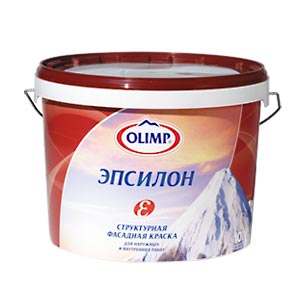
Surface preparation for painting
Despite the fact that the facade structural emulsion has high adhesion and does not require long preparatory work, the surface will still have to be prepared for painting. Otherwise, the price will not justify itself, and the facade coating will not be enough for a long time.
The main part of the preparation comes down to removing old plaster and paint that does not hold well. If a layer of plaster was applied in ancient times without reinforcement, then it makes sense to remove it completely. D
it is done with hot water and sharp craftsman. The plaster is soaked and after a while it flies off quite easily when struck with a trowel.
If the old plaster sits firmly, then you can simply putty the largest irregularities and cover everything with a primer. Be sure to let the plaster dry, usually a layer of 1 cm dries for a couple of days.
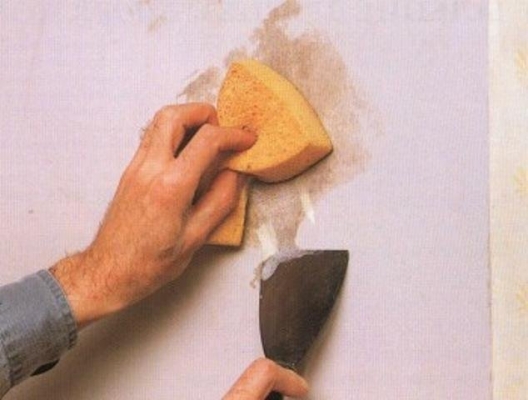
Very often, manufacturers recommend buying a primer and putty of their own brand. Even if the price is high, these recommendations make sense, since the chemical composition of the mixtures of one manufacturer shows the best combination.
Facade structural paint is usually designed for a specific primer, and it may "conflict" with other brands.
But if there is no primer of the required brand, then you can take any water-based one. Structural paint adheres tightly to it.
Given that the emulsion dries very quickly, and the facade cannot be painted at one time, much attention should be paid to organizational processes.
If structural paint will be used to create patterns on the facade, then it is necessary to prepare at least comfortable scaffolding. When painting with a single-color even layer, you can, of course, get by with an ordinary staircase or walkways.
If you need to color large surface per a short time, it is advisable to get a spray gun. But what you should not do is try to mix different colors, achieving some new shades.
Practice shows that then it is impossible to achieve a perfectly even shade on the facade. After all, the facade structural emulsion, due to its properties, very quickly becomes thick and can be unevenly mixed.
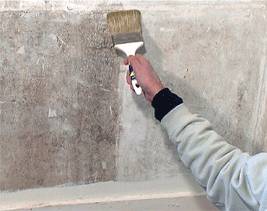
How to paint the facade
Fans of saving should be warned right away that the high price of paint is far from all expenses. You will need to purchase another container for mixing, rollers and a special mixer or nozzle for a drill. After all, structural paint must be thoroughly mixed before use.
If you plan to use an airbrush, then rollers and brushes will still be needed for individual sections. In addition, it must be remembered that facade structural paint is used, among other things, for leveling small irregularities.
And for this task, sometimes a roller and a plastic spatula with a Teflon coating are better suited (paint does not stick to it). So that the price of tools does not hit your pocket, it is better to purchase them at the same time as paint somewhere in wholesale warehouses.
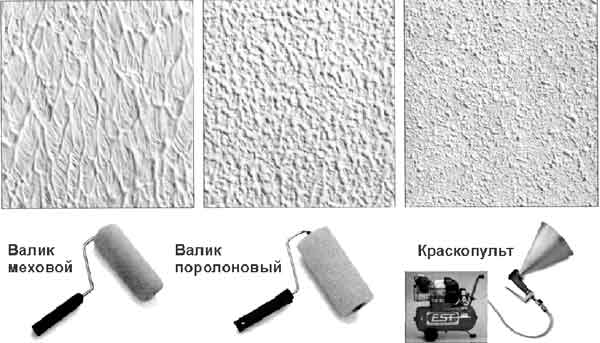
Modern paint sprayers have the function of adjusting the grain size of the drops - this will allow you to create textured drawings. It is best to paint the surface with a spray gun from top to bottom. Then the dripping drops can be leveled.
It is worth remembering that the wall of the building must be painted immediately and completely - otherwise stains may form. To give the shade a more saturated color, wait until the first layer is completely dry.
It is necessary to prime the surface between layers only on the condition that not much time has passed since the last application.
When applying a pattern with a textured roller, you should do it as quickly as possible, sometimes it even makes sense to purchase several rollers and do the work together with assistants. The formation of the texture occurs after the application of the first layer.
However, you can also make a spectacular drawing by dipping a relief roller with paint of a different shade and applying a few elegant strokes. The price of the facade will be low, and the artistic effect will be high.
Considering that facade structural paints are very specific, it is possible to practice on some surfaces in application before responsible painting. This is especially important when working with a spray gun.











How to understand: will the kitten be fluffy?
What kind of light alcohol can be drunk for pregnant women: the consequences of drinking
Why do the legs swell in the ankles and ankles of the feet in pregnant women: causes and methods of treatment
The wedding of Prince Harry and Meghan Markle: scandalous and secret details of the marriage (photo) The future marriage of Prince Harry year NTV
How to close white plums for the winter